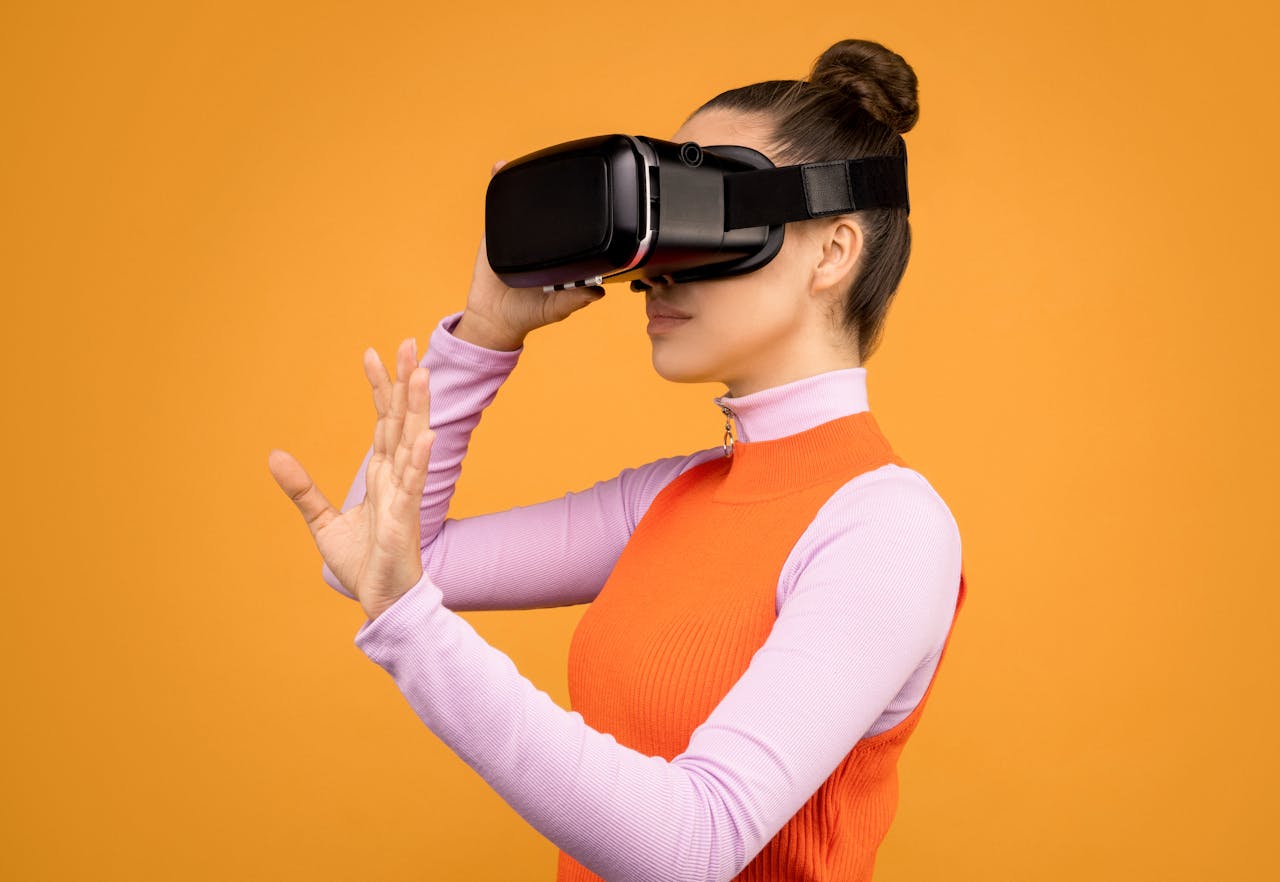Write Us: hello@ali5.org
Augmented Reality vs. Virtual Reality: What’s Worth Investing In?
Augmented Reality vs. Virtual Reality, what’s worth investing in? Learn the key differences, real-world uses, and future potential to make an informed choice.

Virtual reality (VR) and augmented reality (AR) aren’t just tech terms anymore. They used to be ideas for the future, but now they’re real goods and industries where you can work. Both are changing how we use digital material in many areas, from education and gaming to retail and health care.
The thing is, AR and VR are not the same thing at all, even though they are often grouped together. They can be used for different things and have very different investment possibilities. To make smart decisions about buying gadgets, making apps, or betting on the companies that make them, you should know where each technology is now and where it’s going.
What’s the Difference Between AR and VR?
- Augmented reality (AR) adds computer-generated things to the real world. You could use the camera on your phone to look at furniture in your living room before you buy it, or you could wear glasses that show you routes as you walk.
- Virtual reality (VR) lets you enter a computer world that is completely different from your real world. After putting on a headset, you’re in a game, exercise, or virtual meeting room.
Briefly:
- AR is the real world plus computer layers
- VR means a completely digital world
Where AR Really Shines
The best thing about AR is that it adds to life without replacing it. In other words, you can use it while being aware of your surroundings. This makes it very useful in many situations.
1. The Potential for Everyday Use
- AR apps, like Google Lens, can quickly translate text or figure out what something is.
- What are Snapchat and Instagram filters? Now that’s AR at its most fun.
- Apps like IKEA Place let you see how furniture will look in your home before you buy it.
2. Software for business
- In medicine, AR lets surgeons put 3D scans on top of each other during operations.
- AR glasses help people who work in warehouses find the right shelf.
- AR makes textbooks and training manuals more engaging in the classroom.
3. Easy access to hardware
To try AR, you don’t need to buy any expensive gear; most smartphones already do. That makes it easy for people to use AR in their daily lives and lowers the barriers to adoption.
Where VR Really Stands Out
Immersion is what VR does best. When you put on a mask, you forget about the outside world and become fully immersed in the scene on the screen.
1. Games and entertainment
- VR game consoles like PlayStation VR and Meta Quest put you right in the middle of the action.
- Media like virtual shows, art galleries, and movie experiences can be seen from all sides.
2. Practice and lessons
- VR flying simulators are used to train pilots.
- Responders to emergencies practice in fake disaster situations.
- Athletes use VR to see how plays will go and make better decisions.
3. Working together from afar
AR adds information on top of things, but VR can put people in the same virtual area. Companies use VR for things like product creation meetings, virtual offices, and events that bring people together.
The World of Investment
Here’s how AR and VR are different when it comes to money: buying stocks, funding startups, or making your own product.
-
Augmented reality as an investment opportunity
- High rate of uptake right now, thanks to smartphones
- Short-term growth: strong in shopping, healthcare, education, and business uses
- Big names in AR include Apple (with Apple Vision Pro and reported AR glasses), Google, Microsoft (with HoloLens), and Niantic (with Pokémon Go).
- Less risky because AR technology can be used slowly and without big changes to how people live.
-
Potential Investments in Virtual Reality
- Adoption rate right now: Moderate (mostly gamers and niche businesses).
- Short-term growth: gaming, training, and business teamwork are all strong areas
- Meta (Quest glasses), Sony (PlayStation VR), HTC (Vive), and Valve (Index) are some of the big names in VR.
- Higher risk because VR needs more expensive hardware and a group of committed users.
Things that AR and VR need to work on:
- Concerns about privacy, AR glasses could record everything you see, which would make monitoring more difficult.
- Real-time 3D rendering on small devices needs a lot of battery life and computer power.
- The public still thinks of smart glasses as “tech geek” gadgets.
For VR:
- For some users, the full experience is too much for them to handle for long.
- Needs for physical space: VR works best when you have enough space to move around.
- Content limits: It costs a lot of money and takes a lot of time to make good VR experiences.
What Should You Put Your Money Into?
Your goals will tell you the truth. If you want a lot of people to use your idea soon:
- Pick AR. You already have it in your pocket; it works with gadgets you already have, and there are clear business cases across all fields. Retailers, teachers, and health care professionals are already using AR in their daily work.
If you want to make a lot of money over the long term:
- Put your money on VR. Though it’s taking longer for VR to catch on, the fields that use it, gaming, training, and design, are very interested in it. If the tech gets past its problems, VR could take over entertainment, working from home, and even some social interactions.
The Way to Begin
For AR:
- Look into making apps with ARKit (Apple) or ARCore (Google).
- Check out AR content-making tools like Zappar and 8thWall.
- If you want to trade in stocks, keep an eye on companies that are adding AR to everyday items.
For VR:
- Try out Meta Quest 3 and PlayStation VR2 to find out what other people think of them.
- Check out how to build things in Unity or Unreal Engine.
- Think about VR startups that help with healthcare training, schooling, or working together as a business.
In Short
AR and VR aren’t in a race to see who can win. Each tool is made for a specific job. AR adds to reality, but VR takes its place. AR is easy to use in everyday life, while VR can really immerse you in certain situations.
AR is the safer bet because it is easy to use and can be used for many things. It is also a better short-term investment. VR might be worth the risk if you want to make a lot of money in the future and don’t mind waiting for people to catch on.
In the end, it might not be best to pick one over the other, but to look for chances to use both. This is because AR and VR might be able to work together in the future to make something new. “Mixed reality” is the name of this new thing.







